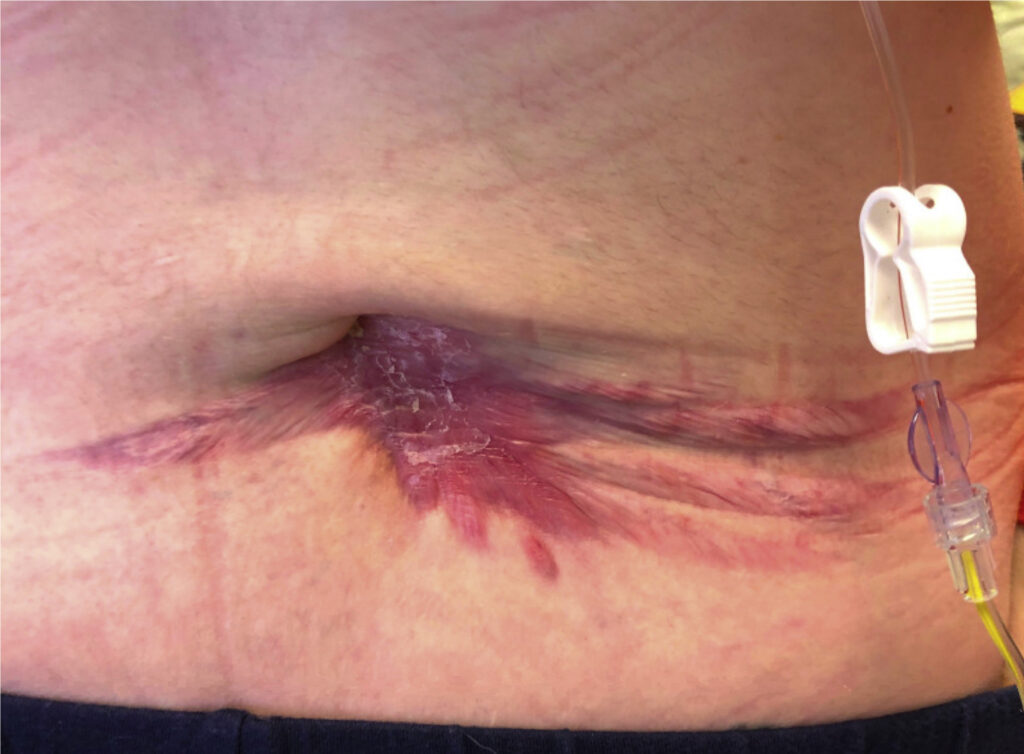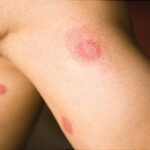Escherichia coli (E. coli) is a facultative anaerobic, gram-negative bacillus that predominantly inhabits the gastrointestinal tract. While widely recognized as a cause of urinary tract and gastrointestinal infections, E. coli has also emerged as a significant pathogen in skin and skin structure infections (SSSIs), especially among immunocompromised patients, surgical wound cases, and polymicrobial infections.
Its role in soft tissue infection has increased with the rise of multidrug-resistant strains and nosocomial outbreaks. Prompt identification, targeted therapy, and aggressive management are critical for favorable clinical outcomes.

Pathophysiology and Virulence Factors
E. coli skin infections are often associated with breaches in skin integrity, including surgical sites, pressure ulcers, or traumatic wounds. Pathogenesis involves several virulence factors:
- Lipopolysaccharide (LPS): Triggers inflammation, fever, and septic shock
- Hemolysins: Disrupt host cells, promoting tissue necrosis
- Adhesins (e.g., pili, fimbriae): Facilitate colonization of wound surfaces
- Capsule: Enhances resistance to phagocytosis
- Extended-spectrum beta-lactamases (ESBLs): Confer resistance to multiple antibiotics
These factors enable E. coli to persist in tissue, evade host defenses, and contribute to systemic infection in severe cases.
Clinical Presentations of E. coli Skin and Soft Tissue Infections
1. Post-Surgical Wound Infections
- Erythema, warmth, purulent discharge
- Fever and leukocytosis
- Occur typically 48–72 hours postoperatively
- Common in abdominal and perineal surgeries
2. Diabetic Foot Infections
- Often polymicrobial, E. coli among dominant pathogens
- May present with cellulitis, ulceration, foul odor, and necrosis
- Can progress to osteomyelitis if untreated
3. Necrotizing Soft Tissue Infections
- Rapidly spreading infection involving fascia and subcutaneous layers
- Hemorrhagic bullae, crepitus, severe systemic toxicity
- E. coli identified in mixed aerobic–anaerobic cultures
4. Cellulitis and Abscess Formation
- Localized swelling, pain, warmth, and erythema
- May progress to abscess requiring incision and drainage
- Higher risk in immunosuppressed patients
Risk Factors for E. coli SSTIs
- Recent abdominal or urogenital surgery
- Diabetes mellitus with peripheral vascular disease
- Immunosuppression (e.g., chemotherapy, HIV, transplant recipients)
- Indwelling catheters or wound drains
- Pressure ulcers and skin breakdown in elderly or immobilized individuals
- Exposure to contaminated water or fecal material
Diagnostic Approach for E. coli Skin Infections
Clinical Assessment
- Evaluate for fever, pain, wound discharge, erythema, swelling, and signs of systemic involvement
- Assess comorbidities and potential entry points for infection
Laboratory and Microbiological Testing
- Wound swab and culture: Confirms pathogen and guides antibiotic selection
- Blood cultures: Essential in febrile or septic patients
- Complete blood count (CBC): Leukocytosis or neutropenia
- CRP and procalcitonin: Indicators of inflammation and sepsis
- Antimicrobial susceptibility testing: Crucial for ESBL or multidrug-resistant strains
Imaging
- Ultrasound: Identifies abscesses or fluid collections
- MRI: Preferred for deep infections or suspicion of necrotizing fasciitis
- X-ray: May show gas formation in severe cases
Antibiotic Therapy for E. coli Skin and Structure Infections
Empirical Therapy (Prior to Culture Results)
Selection depends on local resistance patterns and patient comorbidities:
- Piperacillin-tazobactam or cefepime
- Carbapenems (imipenem, meropenem) for suspected ESBL-producing strains
- Vancomycin if MRSA co-infection is a concern
- Clindamycin may be added to inhibit toxin production in necrotizing infections
Targeted Therapy (Based on Sensitivity)
- Trimethoprim-sulfamethoxazole, ciprofloxacin, or ceftriaxone for susceptible isolates
- ESBL-producing strains: Carbapenems remain the agents of choice
- Duration:
- 7–14 days for uncomplicated infections
- 3–4 weeks for necrotizing or deep-tissue involvement
Surgical and Supportive Management
- Surgical debridement: Removes necrotic tissue and reduces bacterial load
- Incision and drainage: Required for abscess management
- Negative pressure wound therapy: Supports healing and exudate control
- Glycemic control: Essential in diabetic patients
- Nutritional support: Enhances recovery and immune function
Infection Control Measures
- Strict hand hygiene and contact precautions in healthcare settings
- Sterile wound care and aseptic surgical techniques
- Antibiotic stewardship to prevent resistance development
- Patient education on wound hygiene and early signs of infection
- Regular wound monitoring in diabetic and bed-bound patients
Complications of Untreated or Severe E. coli SSTIs
| Complication | Description |
|---|---|
| Sepsis and septic shock | Due to bacterial translocation and endotoxemia |
| Necrotizing fasciitis | Life-threatening soft tissue destruction |
| Chronic wound formation | Delayed healing due to persistent infection |
| Osteomyelitis | Bone infection from contiguous spread |
| Multi-organ failure | In severe systemic infections |
Early intervention is vital to minimize the risk of these outcomes.
Prognosis and Mortality
Prognosis varies with the site, depth, resistance profile, and timeliness of treatment. Mortality is highest in necrotizing infections and immunocompromised hosts.
| Infection Type | Prognosis Factors | Mortality Rate |
|---|---|---|
| Superficial cellulitis | Excellent with prompt antibiotics | <5% |
| Post-surgical infection | Depends on debridement and antibiotic delay | 10–20% |
| Necrotizing infection | Requires early surgical and ICU support | 25–40% |
Skin and skin structure infections caused by Escherichia coli are increasingly recognized as clinically significant, particularly in patients with comorbidities or healthcare exposure. Effective management relies on early recognition, appropriate empirical and targeted antibiotic therapy, surgical intervention when necessary, and stringent infection control practices. With the rise of multidrug-resistant E. coli strains, precision in diagnosis and treatment is more crucial than ever to ensure positive patient outcomes and reduce healthcare burden.

